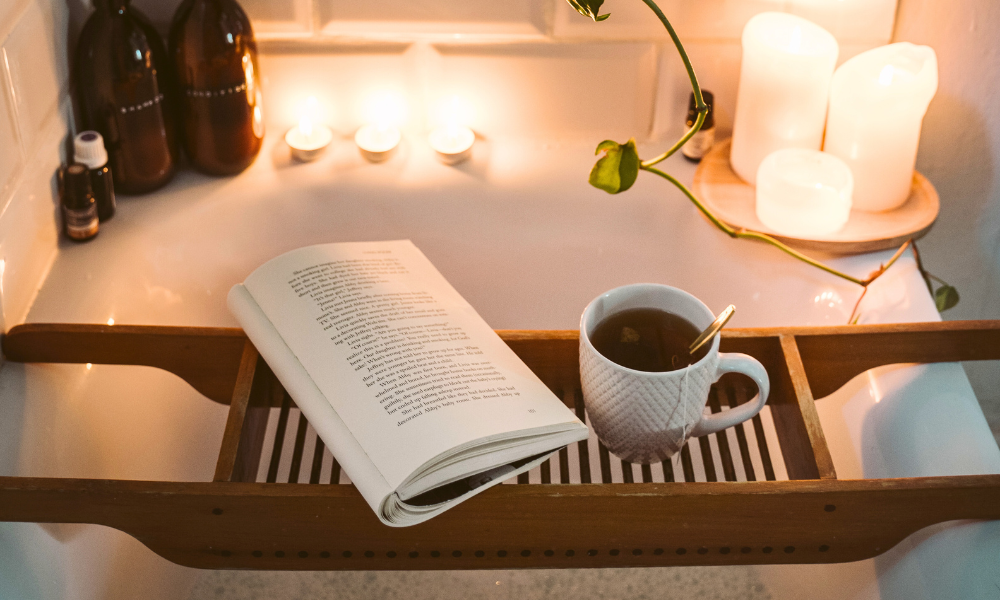Do you ever get that feeling where you just can’t anymore? Maybe it’s at work and you’re struggling to feel motivated to complete normal tasks. Or you might be a stressed parent with an endless to-do list who hasn’t had a moment for themselves. We all go through phases of exhaustion and frustration, but those feelings can get so bad it turns into something more. Enter burnout.
What Exactly Is Burnout?
“Burnout is a state of physical and emotional exhaustion. It can occur when you experience long-term stressors in your job, or when you have worked in a physically or emotionally draining role for a long time,” Kristian Wilson, a licensed mental health counselor in Florida tells Grow Therapy.
Coined in the 1970s by the American psychologist Herbert Freudenberger, the term burnout was initially used to describe the “consequences of severe stress and high ideals in ‘helping’ professions,” such as doctors and nurses, according to the National Library of Medicine. But these days it can affect anyone.
“Burnout is an emotional state where one has been working at a particular task or job for so long and without any growth or accomplishment that their productivity and/or quality of work decreases, along with their mental and physical health,” says Cynthia Mobley, a licensed clinical social worker in Massachusetts.
Burnout rates have been on the rise for the last several years, reaching a record high. In 2021, the American Psychological Association conducted its Work and Well-being Survey. Of the 1,501 U.S. adult workers who participated, 79% said they had experienced work-related stress in the month before they were surveyed. The negative impacts of this stress included a lack of interest, motivation, and energy in 26% of participants and a lack of effort at work in 19% of participants. In addition, those surveyed also reported cognitive weariness (36%), emotional exhaustion (32%), and physical fatigue (44%).
What Causes Burnout?
So what actually turns regular stress and exhaustion into burnout? According to Wilson, there are six primary factors: workload, control, reward, community, fairness, and values.
Workload. Whether it’s a monotonous role or one that’s incredibly chaotic, either can lead to fatigue and eventually the dreaded job burnout. “When you chronically feel overloaded, these opportunities to restore the work-life balance don’t exist. To address the stress of your workload, assess how well you’re doing in these key areas: planning your workload, prioritizing your work, delegating tasks, saying no, and letting go of perfectionism,” explains Wilson.
“When you have a workload that matches your capacity, you can effectively get your work done, have opportunities for rest and recovery, and find time for professional growth and development.”
Control. Feeling like you don’t have control over your situation can be another cause of burnout. Whether that’s feeling like you lack autonomy, access to resources, or a say in decisions that impact your professional life, all of these can take a toll on your well-being.
If you’re feeling out of control, Wilson suggests evaluating your situation so you can get a clear understanding of why exactly you’re feeling that way.
“For instance, does your boss contact you at all hours of the day and night, and make you feel like you need to always be on call? Are the priorities within your workplace constantly shifting so you can never get ahead? Or do you simply not have enough predictability in terms of your physical or personal resources to effectively perform your job?” says Wilson. Identifying
Reward. Has your job started to feel like it’s no longer worth the effort? While it might have once brought you joy, if that changes, this can be another cause of burnout.
“If the extrinsic and intrinsic rewards for your job don’t match the amount of effort and time you put into them, then you’re likely to feel like the investment is not worth the payoff. In these instances, you want to look within and determine exactly what you would need to feel properly appreciated,” Wilson suggests.
Community. Having a supportive and connected community around you is important. If you don’t have that and you feel isolated and alone in your job, this is when burnout can creep in. While you likely can’t choose your colleagues or clients, you can improve the dynamic you have with them by putting out the extra effort to connect.
“It could be as simple as taking the time to ask others how their day is going — and really listening. Or sending an email to someone to let them know you appreciated their presentation. Or choosing to communicate something difficult in a respectful, nonjudgmental way. Burnout can be contagious, so to elevate your individual engagement, you must shift the morale of the group,” says Wilson.
Fairness. How you perceive the way you’re treated matters, too. Do you believe you’re treated fair and equitably? If your work goes unnoticed while others get praised for theirs, or if someone else gets special treatment and you don’t, this can have an impact on whether you experience burnout.
Values. If your personal values and those of your company don’t align, you might struggle to maintain motivation in your job. This lack of desire to work hard and persevere can eventually lead to a feeling of burnout.
“Ideals and motivations tend to be deeply ingrained in individuals and organizations. When you’re assessing this element of burnout, you need to think carefully about how important it is to you to match your values with those of the organization,” says Wilson.
Here are the Common Signs and Symptoms of Burnout
Are you feeling tired or drained most of the time, no matter how much sleep you get or what you’re working on? Do you feel like you have to drag yourself to work each day or struggle to get started? Chances are you’re experiencing burnout.
“Burnout isn’t simply about being tired. It’s a multifaceted issue that requires a multifaceted solution. Before you quit your job, really think through what exactly is contributing to your burnout and attempt to make changes. If you find that despite your best efforts, little has changed, then see if it makes sense to stay or if it’s time to leave,” says Wilson.
Some early signs to watch out for include a lack of energy, an inability to be productive, trouble concentrating, a lack of satisfaction with your work, and a general disillusionment about your job.
Other mental and physical symptoms of burnout are chronic stress, fatigue, insomnia, sadness, anger or irritability, unexplained headaches, stomach or bowel problems, alcohol or substance misuse, heart disease, high blood pressure, Type 2 diabetes, and vulnerability to illnesses.
Tips for Burnout Recovery
Recognizing burnout and its symptoms is an important first step. Once you’ve identified you’re suffering from it, you can start making changes in your life to improve. It can be easy to get overwhelmed or feel like you need to take extreme measures, such as quit your job. While this might be necessary, don’t make any big decisions at first. Try starting small and focusing on the short term, like taking a week off and practicing self-care. Then talk with your therapist to make realistic daily goals. But most important, don’t forget to prioritize yourself.
Unfortunately, there’s no straightforward solution to burnout. Everyone’s situation is different and the severity of burnout varies. Which means it can take different amounts of time to recover from burnout. But if you begin by prioritizing yourself, you’ll be on the path to recovery.
“Take a week off and make sure to get plenty of sleep, eat healthy meals, avoid alcohol and caffeine, get plenty of sunshine, drink the proper amount of water, and participate in positive activities,” suggests Mobley.
Here are four other tips you can try to get you on your way toward burnout recovery.
Know Your Limits. Stress is part of life; there’s no way to avoid it nor would you want to. It’s part of what keeps us motivated. But too much stress or being stressed too often isn’t healthy. Everyone handles stress differently and it’s important to know how much you can handle and what your breaking point is. Do a self-inventory and ask yourself: what pushes me over the edge? What levels of anxiety am I comfortable with? Understanding yourself and your limits will help with your burnout recovery.
Set Boundaries. It’s important to protect your time, space, and sanity, and the only way to realistically do this is to set boundaries for yourself. Maybe this means taking an hour to exercise every day, no exceptions, and not checking your work email while you do. Or perhaps you make a strict rule to not take work calls or read emails on the weekend. You could even consider taking a mental health day to recover when you feel burnout creeping in. Making sure to have these boundaries in place for yourself and your family will help you recover from any burnout you might be dealing with.
Take Time to Disconnect from Social Media. In addition to setting boundaries with checking work emails during set periods, it could be helpful to avoid technology altogether for several hours a day. Take time to unplug from your phone/tablet/computer and spend that time doing something enjoyable, like working out, going for a walk, meditating, or simply enjoying the quiet time.
Have a Hobby Where You’re in Control. Having an area of your life that you’re in charge of and don’t have to answer to anybody is another great way to work on burnout. Hobbies that are creative in nature, like drawing, journaling, or building model trains, are a great place to start.
How to Prevent Burnout From Happening Again
Once you’ve recovered from burnout, it’s important to take measures in order to hopefully prevent it from happening again. The burnout recovery strategies mentioned above are also helpful to maintain in your daily life.
In addition, you may want some extra support and can try implementing the following tips:
Talk with your therapist about getting a burnout prevention plan in place if you’re worried it could happen again. Mobley suggests making realistic daily goals with your therapist to help.
Take periodic breaks throughout the day if you notice your focus or concentration decreasing.
Step away from work during lunchtime instead of eating at your desk or workstation. Take that time to go outside and get some fresh air or even get some physical activity like going for a walk.
Check in on your co-workers to make sure they are doing okay and following the above tips. This helps build a better sense of community and reminds everyone to take care.
Stop work at your pre-determined designated time; don’t work overtime if you’re not mandated to do so.
Get regular exercise that can help alleviate stress, such as yoga or tai chi, which are both not only good for your body but also your mind.
Get enough sleep. Sleep restores your well-being and protects your health.
Practice mindfulness, which is the act of focusing on your breath flow and being intensely aware of what you’re sensing and feeling at every moment, without interpretation or judgment. In a job setting, this practice involves facing situations with openness and patience, and without judgment.
The Takeaway
Burnout can feel completely overwhelming when you’re experiencing it. But understanding how to recognize the symptoms before things get too bad and being armed with the tools to recover and prevent burnout from happening again will make you a more resilient and happy person in the long run.
Alan Deibel a licensed clinical professional counselor at Grow Therapy. He has more than 13 years of diverse clinical experience with a focus on treating addiction, trauma, anxiety, and mood disorders in a hospital setting. His primary modality of treatment is Cognitive Behavioral Therapy with a person-centered approach. He brings a flexible and creative approach that is curated to meet each of his patients specific needs.
Read More









